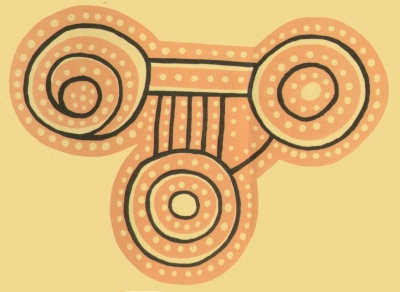
|
Australian Legendary TalesBy K. Langloh Parker1897 |

|
Australian Legendary TalesBy K. Langloh Parker1897 |
This is still one of the best available collections of Australian Aboriginal folklore. It was written for a popular audience, but the stories are retold with integrity, and not filtered, as was the case with similar books from this period. That said, the style of this book reflects Victorian sentimentality and, an occasional tinge of racism that may not sit well with some modern readers.
K. Langloh Parker (the K. stands for 'Katie') [1856-1940] lived in the Australian outback most of her life, close to the Eulayhi people. The texts, with their sentient animals and mythic transformations, have a sonambulistic and chaotic narrative that mark them as authentic dreamtime lore. The mere fact that she cared to write down these stories places her far ahead of her contemporaries, who barely regarded native Australians as human.
This was the first book Parker wrote. She write four books, three of native folklore and one an ethnography of the Eulayhi tribe. This was also one of the first texts added to sacred-texts after it was launched to add coverage of traditional cultures. This was also the first text donated by sacred-texts to Project Gutenberg.
Parker has some odd connections with modern popular culture. She was rescued from drowning by an aborigine at an early age. This incident was portrayed in the film 'Picnic at Hanging Rock', directed by Peter Weir. The song They Call the Wind Mariah was based on a story from this book. (And the pop singer Mariah Cary was reputedly named after this song).--J.B. Hare